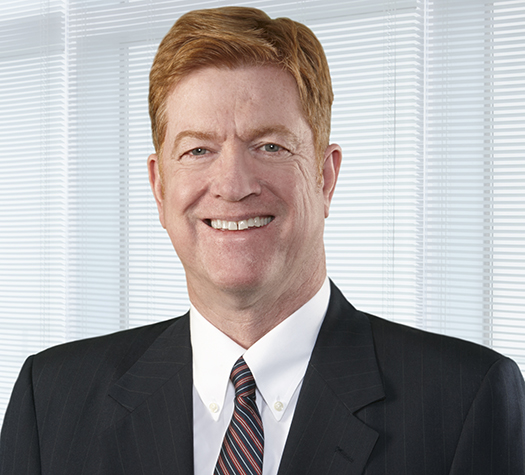“The lesson to be taken away is that the efficacy of designing around is likely to depend on how significant the change is in terms of the claimed invention’s novelty and/or functionality. One should also consider the possibility of incorporating changes that make use of long-standing prior art techniques…”
 Whenever a company finds itself in the cross-hairs of a cease-and-desist letter or patent infringement lawsuit, a license may not be a viable option. That is often the case when the patent holder is a competitor intent on enforcing a patent against its rivals.
Whenever a company finds itself in the cross-hairs of a cease-and-desist letter or patent infringement lawsuit, a license may not be a viable option. That is often the case when the patent holder is a competitor intent on enforcing a patent against its rivals.
The first line of defense in these situations is to explore whether you have a solid argument of non-infringement based on the absence of an essential element of the patent’s independent claims. Even if an element is arguably missing, you still must consider whether your accused product or service might be found to infringe under the doctrine of equivalents.
The next line of defense is to assess whether the patent is invalid for one or more reasons (e.g., non-patentable subject matter, anticipation, obviousness, indefiniteness, enablement, inequitable conduct). Any such defense, however, must overcome the presumed validity of the patent. In addition, the development of such a defense customarily requires time and money, including extensive prior art searches.
An often-overlooked approach is to re-design your product or service to avoid infringement. Under the “all elements rule,” for a patent to be infringed, the accused product, method or service must include each and every element or step recited in the relevant independent claims. See, e.g., Dolly, Inc. v. Spalding & Evenflo Cos., 16 F.3d 394, 397 (Fed. Cir. 1994). Our patent system recognizes the principle that “the protected invention is what the claims say it is, and thus that infringement can be avoided by avoiding the language of the claims.” Slimfold Mfg. Co. v. Kinkead Indus., Inc., 932 F.2d 1453, 1457 (Fed. Cir. 1991). Therefore, if a particular element or step can be eliminated without compromising the marketability of your accused product or service, it may be possible to avoid infringement. A design-around entails eliminating a prescribed element or step found in the patent claims. Intentional design-arounds to avoid infringement are encouraged under the law as being beneficial to further innovation. See, e.g., State Indus. Inc. v. A.O. Smith Corp., 751 F.2d 1226, 1236 (Fed.Cir. 1985) (“One of the benefits of a patent system is the so-called ‘negative incentive’ to ‘design around’ a competitor’s products.”).
However, simply adding a new element or additional step does not suffice. If it is not possible to eliminate an element or step without undermining the value or functionality of your accused product or service, then you should consider whether it is possible to either substitute something for that element or carry out a step in a materially different way. Even then, your re-designed accused product or service will not necessarily guarantee a safe harbor. The patent holder in response to a design-around may either (1) assert the doctrine of equivalents to reach your new product or service or (2) return to the patent office with a continuation or continuation-in-part (CIP) application squarely aimed at covering your newly-designed product or service, while still taking advantage of the parent or earlier application’s priority filing date.
Under the doctrine of equivalents, the test will be whether your product or service accomplishes the same function as the claimed invention in substantially the same way to obtain the same result. See, e.g., Duncan Parking Techs., Inc. v. IPS Grp., Inc., 914 F.3d 1347, 1362 (Fed. Cir. 2019). The applicability of this doctrine will turn, in part, on the patent’s prosecution history. If the patent holder, in an attempt to distinguish over the teachings of prior art patents or systems, limited the scope of the patent’s reach or narrowed the meaning of particular claim terms, the doctrine of equivalents may not apply. In addition, there is Federal Circuit authority providing that evidence of an attempt to design around a patent may entitle the accused infringer to an inference that the change is not insubstantial. See, e.g., Roton Barrier, Inc. v. Stanley Works, 79 F.3d 1112, 1127 (Fed. Cir. 1996) (“[W]e note that it is undisputed that Stanley was aware of the ‘008 patent and attempted to design around it …. such designing around provides an inference of no infringement under the doctrine.”); but see DeMarini Sports, Inc. v. Worth, Inc., 239 F.3d 1314, 1334 (Fed. Cir. 2001) (finding district court’s inference of no infringement under the doctrine of equivalents when a competitor attempts to design around a patent as inconsistent with the Supreme Court’s ruling in Warner-Jenkinson Co. v. Hilton Davis Chem. Co., 520 U.S. 17, 36 (1997) that intent plays no role in the application of the doctrine of equivalents).
While it may seem both unfair and contrary to the policy of providing notice of a patent to the public, a patent holder is free to file a continuation application for the express purpose of covering a competitor’s newly designed patent or service. In fact, such second bites at the apple are common. However, in order to invoke and take advantage of the earlier priority date, the applicant must convince the examiner that the “new” patent claims in the continuation or CIP are supported by (1) the patent description found in the earlier application and (2) the prior prosecution history. Wholly new claims or subject matter will not be able to utilize the earlier priority date.
The lesson to be taken away is that the efficacy of a design-around is likely to depend on how significant the change is in terms of the claimed invention’s novelty and/or functionality. One should also consider the possibility of incorporating changes that make use of long-standing prior art techniques, methods or elements, especially any that were cited by the patent examiner, in response to which prior art the patentee either amended its claims or distinguished its invention from such prior art during the course of prosecution.
Ultimately, even if your design-around does not hold up in court, it will likely reduce the risk of willful infringement and enhanced damages, as evidence of good faith attempts to design around known patents has been considered a factor in whether infringement was willful. See, e.g., Trading Techs. Int’l, Inc. v. eSpeed, Inc., 595 F.3d 1340, 1358 (Fed. Cir. 2010) (finding “prompt redesign efforts” as evidence that conduct was not objectively reckless).
Image Source: Deposit Photos
Image ID: 32716045
Copyright: tashatuvango

![[IPWatchdog Logo]](https://ipwatchdog.com/wp-content/themes/IPWatchdog%20-%202023/assets/images/temp/logo-small@2x.png)


![[Advertisement]](https://ipwatchdog.com/wp-content/uploads/2024/04/Patent-Litigation-Masters-2024-sidebar-early-bird-ends-Apr-21-last-chance-700x500-1.jpg)

![[Advertisement]](https://ipwatchdog.com/wp-content/uploads/2021/12/WEBINAR-336-x-280-px.png)
![[Advertisement]](https://ipwatchdog.com/wp-content/uploads/2021/12/2021-Patent-Practice-on-Demand-recorded-Feb-2021-336-x-280.jpg)
![[Advertisement]](https://ipwatchdog.com/wp-content/uploads/2021/12/Ad-4-The-Invent-Patent-System™.png)







Join the Discussion
4 comments so far.
Anon
July 31, 2019 10:35 amA little unusual for a comment directly on point in the immediately previous thread is also directly on point for this thread (well, at least the opening line of the comment):
Absolutely Josh.
A vibrant patent system is one in which BOTH a carrot and a stick is present.
Marcel van der Sluis
July 31, 2019 09:47 amI have had the fascinating experience of reporting anticipating prior art to a client as the result of a prefiling search. The client’s Engineers took the challenge and improved their invention to not only avoid the prior art but made a better invention that was more effective, cheaper and with several additional advantages!
The patent system at its best!
Jeff Lindsay
July 31, 2019 07:54 amExcellent article reminding us of the value of design around efforts. Ron Katznelson’s comments are also highly valuable. Imagine what would have happened if the invention of the light bulb had been given vast government “support” to bring down the price of lighting for the good of the people. If the patents had been seized, nullified, or been made subject to compulsory “fair” licensing, innovation could have been stymied. Or consider the other extreme: if GE had swiftly become part of the crony state and been given special protection, resulting in USPTO harassment of competitive technologies or other antics, innovation could also have been stymied. But healthy patents and healthy design around and seeking of more healthy patents resulted in a cornucopia of innovation and reduced prices. Maybe there’s something our politicians cold learn as they seek to further reduce basic innovation incentives in pharma and other fields.
Ron Katznelson
July 30, 2019 07:26 pmExcellent exposition by the authors, on this important topic that receives too little attention. They thoroughly outline the contours of permissible and productive innovative activities that are beneficial elements of the patent system — those arising collaterally through actions of market players in response to enforcement of patents.
When an important patent is enforced, there is a substantial increase in design-around activity to circumvent the patent claims, often resulting in concomitant consumer welfare benefits as well as dynamic economic efficiencies. For example, the detailed empirical study cited below demonstrates that General Electric Co.’s (“GE”) enforcement of Thomas Edison’s incandescent lamp patent in the 1890’s resulted in:
(a) the patenting surge of non-infringing lamp technologies, designing around Edison’s patent claims. Patenting rate of non-infringing designs rose from an average of 3 patents per year prior to enforcement to 17 per year during the enforcement period;
(b) A surge in entry of new lamp manufacturers to market, nearly doubling the number of active manufacturers during the patent enforcement period;
(c) A precipitous decline in unit price of electric incandescent lamps from about 60 cents to 20 cents, as GE, the market leader, had reduced its price 3 times during the patent enforcement period due to competitive pressure;
(d) GE, the Edison patent owner, began losing unit market share during the its patent enforcement period;
(e) The study also shows direct causal connections indicating that the efforts to invent-around Edison’s patent claims gave rise to new lighting technologies such as electromagnetic-induced lamps, gas-filled lamps, non-carbon filaments leading to the modern tungsten filaments, and phosphorescent electric lamps, the forerunners of modern fluorescent lamps;
(f) The efforts to design-around Edison’s claims also resulted in patentable inventions that pioneered new technologies in their own right, later applied in technological fields other than electric illumination. Those include hermetically-seal connectors, the Tesla Coil, and Chemical Vapor Deposition (“CVD”) used today in semiconductor fabrication.
See Katznelson, R. D. and J. Howells, “Necessity is the Mother of Inventing Around: How circumventing Edison’s lamp patent stimulated downstream development and competition,” (February 14, 2018). At https://ssrn.com/abstract=2464308.